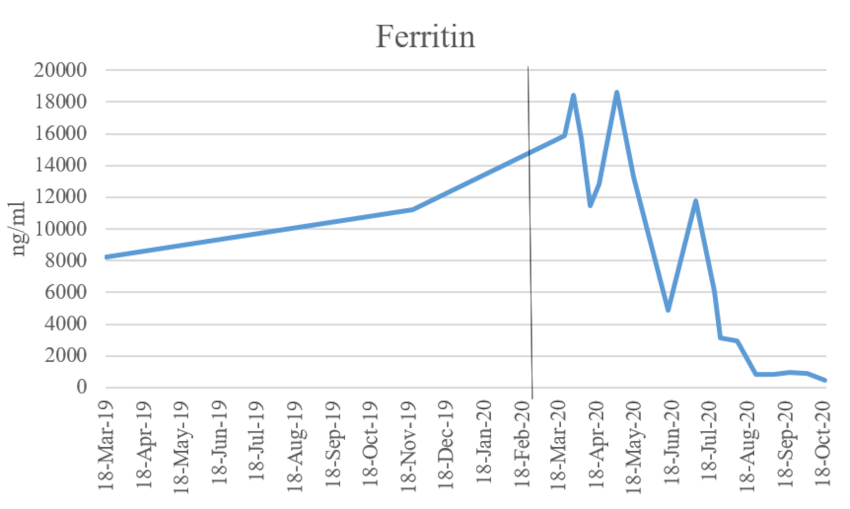Outcomes from the Successful Administration of an Iron-Specific Chelator, HBED (N,N’-Di[2-Hydroxybenzyl]Ethylenediamine-N,N’-Diacetic Acid Monohydrochloride) in a Bottlenose Dolphin (Tursiops truncatus) with Iron-Related Hepatic Disease
Abstract
A 39-year-old male bottlenose dolphin (Tursiops truncatus) with long-term iron storage disease (ISD) had been previously managed utilizing phlebotomy as described.1 However, repeated abnormal clinicopathologic trends indicated worsening hepatopathy, requiring an increase in frequency of treatments. Peduncular discomfort with radiographic changes in the vertebrae at the phlebotomy site required an alternate treatment to manage the animal. Since excess iron can only be removed via phlebotomy or through chelation, the options were limited. Rhinoceros, another species prone to ISD, were evaluated with a unique chelator,2 HBED, (N,N’-Di[2-hydroxybenzyl]ethylenediamine-N,N’-diacetic acid monohydrochloride), an iron specific oral chelator that successfully excretes iron. Treatment was initiated in the dolphin at 40 IU/kg, via fish fed throughout the day. The dose was increased incrementally to 70 IU/kg BW over 4 months. Weekly blood count, serum chemistry, iron panels, inflammatory markers, and minerals were evaluated. The dolphin showed significantly improved liver enzyme and iron levels, including reduced transferrin saturation and ferritin (Figure 1). Clinical and behavioral improvements in this case suggests HBED has use as an iron chelator in dolphins.
Figure 1. Ferritin (ng/ml) in a bottlenose dolphin (Tursiops truncatus) over the course of chelation with HBED

Black line marks the introduction of the chelator.
Acknowledgements
Special thanks to the marine mammal care and animal health teams.
*Presenting author
Literature Cited
1. Johnson SP, Venn‐Watson S, Cassle SE, Smith CR, Jensen ED, Ridgway SH. 2009. Use of phlebotomy treatment in Atlantic bottlenose dolphins with iron overload. J Am Veter Med Assoc. 235:194–200.
2. Sullivan KE. 2016. Mitigating Iron Overload Disorder in Black Rhinoceros (Diceros Bicornis). [Dissertation]. University of Florida: Gainesville, FL, USA.